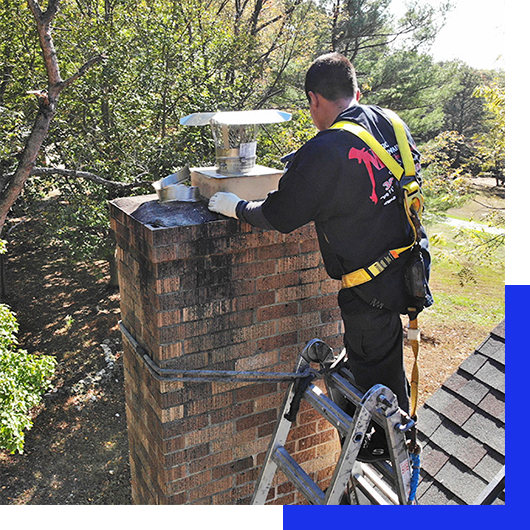Chimney Restoration: Why It’s Not a DIY Job
From smoke-stained bricks to crumbling mortar, a worn-down chimney can be more than an eyesore—it can be a serious safety hazard. While some homeowners are eager to tackle home repairs on their own, chimney restoration is one task best left to the professionals.
In this article, we’ll break down the key reasons why restoring a chimney is far from a weekend project. You’ll learn what restoration actually involves, what can go wrong with DIY attempts, and why investing in expert help is essential for safety and efficiency.
Understanding the Scope of Chimney Restoration
More Than Just Bricks and Mortar
At first glance, chimney restoration may seem like cosmetic work—replacing a few cracked bricks or resealing joints. In reality, it’s a structural and safety-focused process. A proper restoration may include repairing the flue liner, rebuilding the crown, replacing the flashing, or even removing and reconstructing sections of the chimney stack.
Professionals approach chimney restoration with specialized tools and techniques that ensure long-lasting, fire-safe results. Trying to replicate these processes without training can cause more harm than good.
Structural Integrity Is Critical
Chimneys are constantly exposed to moisture, heat, and shifting temperatures. Over time, this exposure causes brickwork to weaken and internal components like the flue to deteriorate. If left untreated—or worse, repaired incorrectly—these issues can lead to chimney fires, smoke damage, or collapse.
Hiring a certified technician ensures the restoration addresses both visible wear and hidden damage. Expert services like those offered here include inspection and repair that meet strict safety codes and industry standards.
Code Compliance and Safety Regulations
Many local building codes require that chimney repairs, especially those involving fire safety components, be conducted by a licensed professional. Failing to meet these codes can result in insurance issues or failed home inspections in the future.
Additionally, professionals understand proper material selection—using high-temperature mortar or the correct liner material for the type of fuel your fireplace uses. These aren’t details that can be guessed at or improvised.
The Hidden Risks of DIY Chimney Repairs
Incomplete Repairs Can Worsen Damage
DIY repairs often address surface-level symptoms without identifying root causes. You might patch up cracked mortar without realizing water is leaking through a faulty crown. Or you might seal the outside of the chimney while the flue inside remains dangerously damaged.
Without a comprehensive inspection, it’s easy to miss these red flags—leading to more expensive repairs down the road. Expert services from trusted providers, can help diagnose problems before they become disasters.
Safety Hazards and Liability
Climbing a roof with heavy tools isn’t just risky—it’s dangerous. DIY chimney work is a leading cause of ladder-related injuries and falls. Not only that, but incorrect restoration techniques can create fire hazards that endanger your home and family.
Hiring a professional doesn’t just ensure better results—it protects your safety and limits liability. These technicians carry insurance and certifications, so the risk doesn’t fall on your shoulders.
Tech and Tools Matter
Modern chimney restoration often involves infrared scanning, specialized drills, rotary brushes, and advanced sealants. Without access to this equipment—or the expertise to use it—it’s nearly impossible to restore a chimney properly. Today’s digital tools also help technicians generate detailed service reports and inspection results that homeowners can review with confidence.
What to Expect from a Professional Chimney Restoration
Step-by-Step Inspection and Planning
The process starts with a thorough assessment to determine internal and external damage. This may involve video footage inside the flue, moisture testing, and structural inspections. Following that, a customized plan is developed to address the issues affecting your particular chimney setup.
Repair and Replacement
Depending on the condition of the chimney, restoration may include repointing mortar joints, replacing bricks, relining the flue, rebuilding the crown, or installing new flashing. Every measure is taken to adhere to safety regulations and construction codes.
Ongoing Maintenance Support
After the restoration is complete, many providers offer follow-up care and maintenance plans to extend the life of your chimney. Annual inspections and cleanings are recommended to prevent future damage and maintain performance.
FAQs
Q: How do I know if my chimney needs restoration?
Look for cracked bricks, crumbling mortar, rust on the damper, or visible water damage. A certified inspection can confirm the severity.
Q: Can chimney repairs be covered by insurance?
Sometimes. If the damage is caused by a covered event (like a storm), insurance may pay for repairs. Routine wear and tear typically isn’t covered.
Q: How long does chimney restoration take?
It varies based on the damage, but most projects range from one to five days.
Q: Will I still be able to use my fireplace during the process?
No. The fireplace should remain unused until the restoration is complete and has passed final inspection.
Q: How often should a chimney be inspected?
Annually. Regular inspections help catch minor issues before they escalate into major damage.
In conclusion, chimney restoration is not a task for the average DIY enthusiast. It requires technical expertise, code compliance, and a deep understanding of chimney systems. Hiring a professional ensures your chimney is restored safely, efficiently, and with long-term durability in mind. Don’t gamble with your safety—trust the experts.
